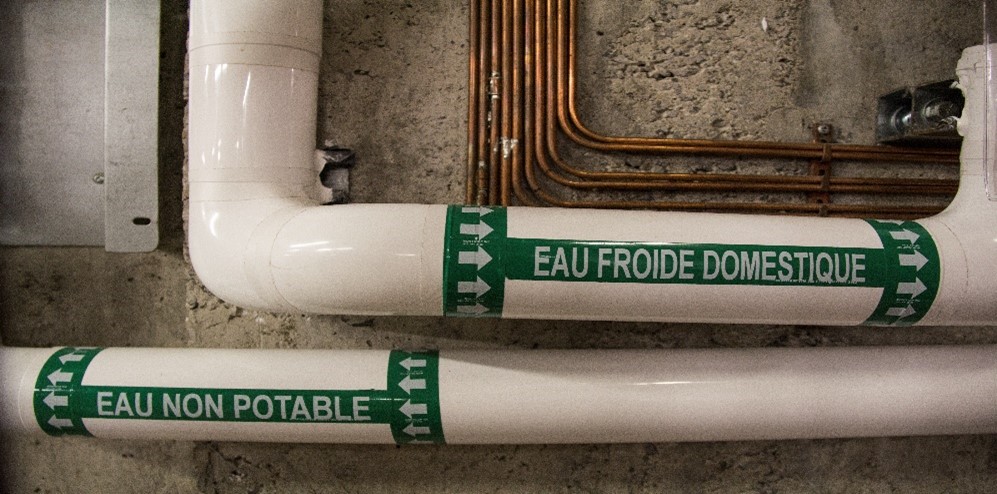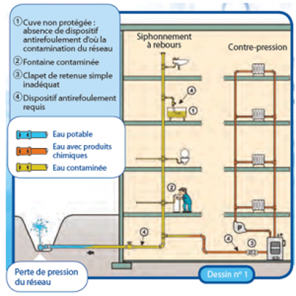
Siphoning occurs when there is depressurization in a plumbing pipe. For this phenomenon to occur, four elements must be present:
Back pressure occurs when the pressure of the building's drinking water system is greater than the pressure of the municipal distribution network. When equipment is connected to the building's drinking water system, such as a boiler that generates steam, it causes an increase in pressure in the building's drinking water network. A backflow could then occur. Several mechanical-hydraulic applications can, by design, cause back pressure. Here are a few examples:
The following figure illustrates the phenomena of siphoning and back pressure:

There are several ways to protect drinking water from backflow. To learn more, contact our experts, they will be happy to answer your questions.
We use cookies to understand how you use our site and to improve your experience. This includes personalizing content and advertising. By continuing to use our site, you accept our use of cookies, terms and conditions, privacy policy. Confused? Send us an e-mail.
I acceptWe use cookies
Respecting your privacy matters to us. We use cookies to personalize our content and facilitate your digital experience. Some cookies may be collected with your consent.
Essential
Essential cookies help make a website usable by enabling basic functions such as page navigation and access to secure areas of the website. The website cannot function properly without these cookies.
Performance
These cookies enable us to analyze navigation on our sites and improve their operation.
Customization
Preference cookies enable a website to remember information that modifies the behavior or appearance of the site, such as your preferred language or the region you are in.
Targeted advertising
These cookies help us limit the number of times you see an advertisement, personalize our offers and services according to your centers of interest, measure the effectiveness of an advertising campaign, and so on. They may be shared with our partners.
We use cookies
Respecting your privacy matters to us. We use cookies to personalize our content and facilitate your digital experience. Some cookies may be collected with your consent.